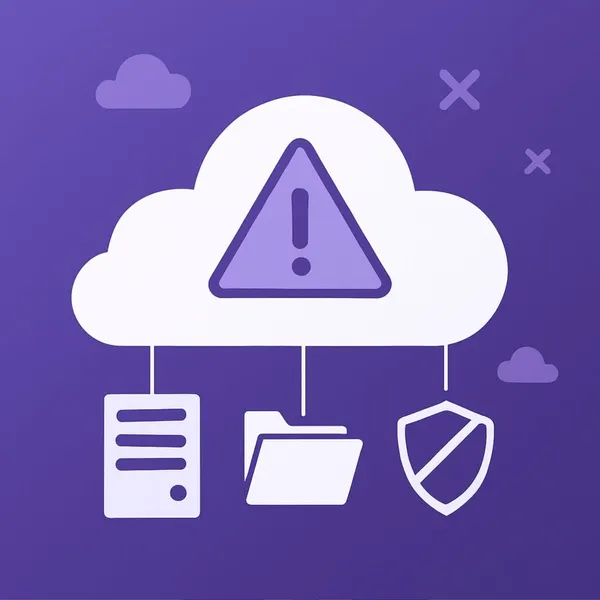
Knowledge base
July 13, 2020
Microsoft Teams with virtual collaboration for the future.
A new perspective on virtual collaboration for the future of work and learning
Today, we’re announcing a range of new features in Microsoft Teams that will make virtual interactions more natural, engaging, and ultimately humane. These features offer three important benefits for people at work and in education. First, they make you feel more connected to your team and reduce fatigue when you meet. Second, they make meetings more inclusive and engaging. And third, they help streamline your work and save time. It’s about enabling people around the world to work together, stay connected, and discover new ways to be productive everywhere. Let’s go into the details.
Feel more connected and reduce fatigue when meeting
Together mode – At a time when people are holding more virtual meetings than ever before, our research has found that many of us feel less connected since moving to remote work, and experience more fatigue during video meetings than during personal collaboration. Together mode is a new meeting experience in Teams that uses AI segmentation technology to digitally place participants on a shared background, making it feel like you’re in the same room with everyone else in the meeting or classroom. Together mode makes meetings more attractive by helping you focus on the faces and body language of others and by making the non-verbal signals so important for human interaction easier to spot. It’s great for meetings where multiple people will speak, such as brainstorms or roundtables, because it makes it easier for attendees to understand who’s talking. The Together with Auditorium View mode is now being rolled out and will be widely available in August. And we will bring more views to Together mode in the future.
Dynamic view
although Together mode provides an extraordinary new meeting experience, it’s not intended for every meeting. We believe that traditional video conferencing that people use on a daily basis can also be more engaging and dynamic. A set of improvements we call dynamic viewing gives you more control over how you see shared content and other meeting participants. With THE help of AI, meetings dynamically optimize shared content and video participants. New controls, including the ability to display shared content and specific participants side by side, allow you to customize the view to suit your preferences and needs. Dynamic view builds on the improvements to the meetings we announced last month, including a large gallery view (August rollout), where you can see video of up to 49 people in a meeting at a time, and virtual brainstorming spaces, allowing meeting organizers to split participants into smaller groups for things like brainstorming sessions or workgroup discussions.
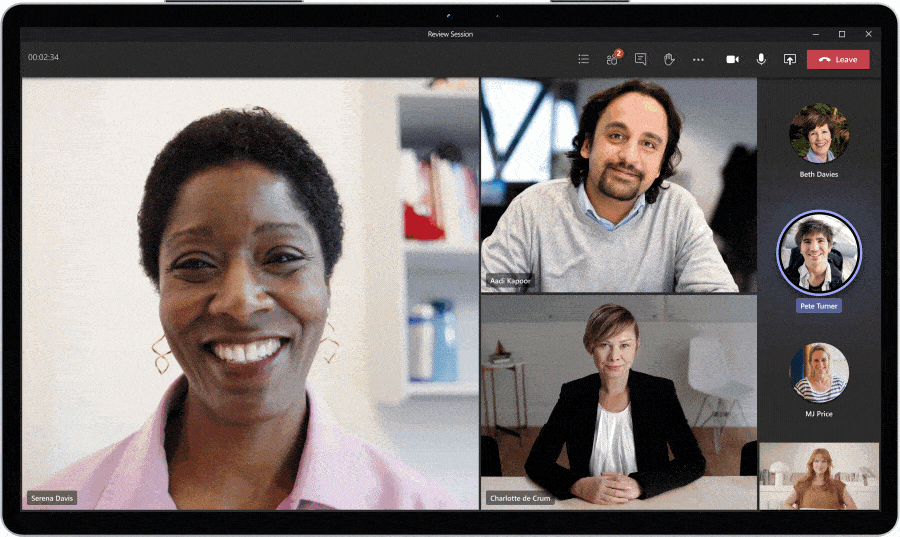
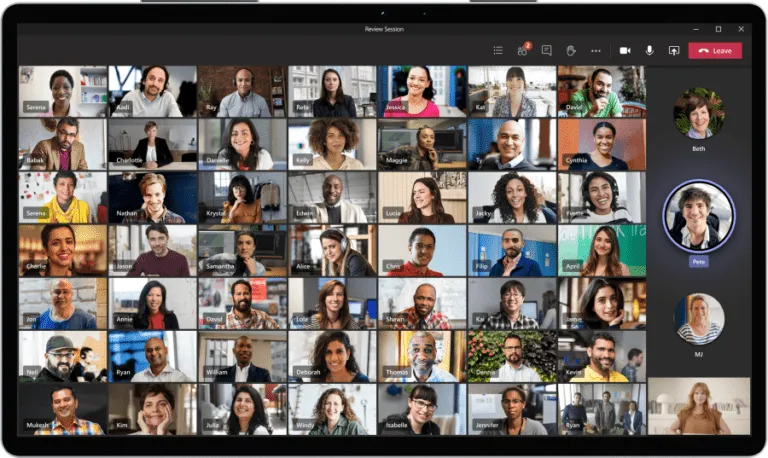
Video filters
we’re all familiar with video filters used in photography and social media apps, and now we’re bringing them to Teams. Before you join a meeting, you can use the filters to subtly adjust the lighting levels and soften the camera’s focus to adjust your appearance.

Reflect message expansion
Our research shows that employee well-being is more important than ever for productivity. Creating an emotionally supportive environment is the key to keeping people healthy, happy and focused. Reflect’s new Messaging extension provides managers, leaders, and teachers with an easy way to check in how their team or students feel – in general, or on a specific topic such as work-life balance, project status, current events, or a change within the organization. IT administrators can install github’s Reflect extension and then make it available to employees in their organization in the message extensions menu. Once installed, the extension provides suggested check-in questions and the ability to add custom questions that team members can respond to in a poll-like experience. Managers or teachers can also choose to make survey results anonymous. The Reflect message extension will be available in the coming weeks.

Make meetings more inclusive, engaging, and effective with Live Responses
Nonverbal cues such as smiles and head nods can be difficult to notice in online meetings, making it challenging for presenters to gauge audience responses and for attendees in large meetings to share a feeling without interrupting the meeting flow. Soon, you’ll be able to respond to a meeting with emojis that will appear to all attendees. Live Comments is a shared feature with PowerPoint Live Presentations, which allows members of the audience to give instant feedback to the presenter. We’ll also bring PowerPoint Live presentations to Teams in the future, engaging audiences directly from Teams.

Chat calls
During meetings, chat has become a lively space for conversations and sharing ideas, and it allows people to participate in the discussion without having to jump in orally. But it can be a challenge to pay attention to video feeds, presentations, and chats at the same time. Currently, Teams users must manually open an IM window to view the chat screen. Soon, however, chats sent during a Teams meeting will appear on the screens of all meeting participants, making the chat more central to the conversation.
Speaker attribution for live captions and transcripts
While Teams already provides live subtitles as a way to follow what’s said in a meeting, we’ll soon be adding attributions to speakers so everyone knows who’s speaking. Live transcripts, due out later this year, offer another way to track what was said and who said it. After a meeting, the transcript file is automatically saved as part of the meeting on a tab.
Note: Comments made by participants participating from a device in a meeting room are attributed to the room rather than to the people in the room.

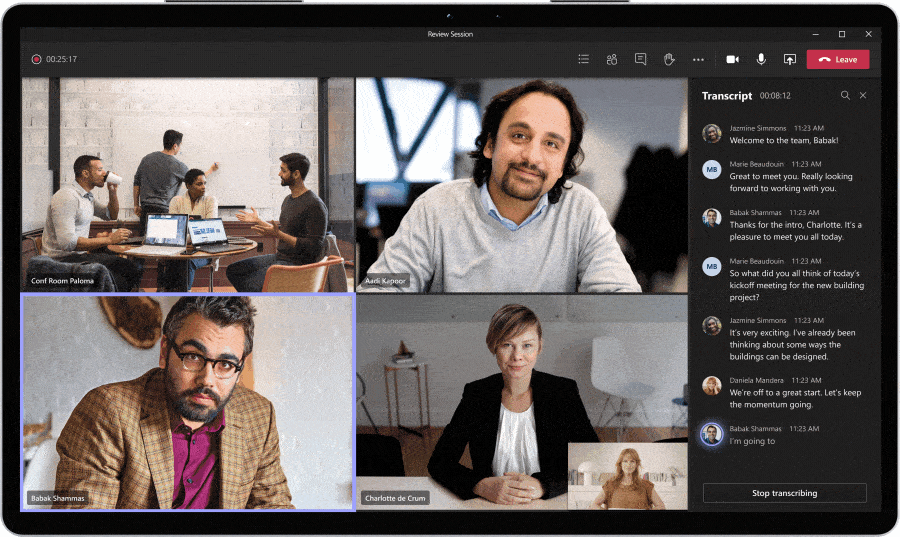
Interactive meetings for 1,000 participants and overflow
There are times when it is important to bring large groups together for meetings or lessons. For more interactive meetings – where attendees can chat, mute to talk, and enable their videos for real-time collaboration – Teams meetings grow to support up to 1,000 attendees. If you want to bring more people together to watch a presentation or discussion, Teams can support a view-only meeting experience for up to 20,000 attendees.
Microsoft Whiteboard Updates
visual collaboration tools can make meetings and learning environments more effective and inclusive. Whiteboard in Teams will soon be updated with new features, including faster load times, sticky notes, text, and drag and drop capabilities. These features allow team members who don’t have access to a touchscreen or Surface Hub to participate in whiteboard sessions during Teams meetings.
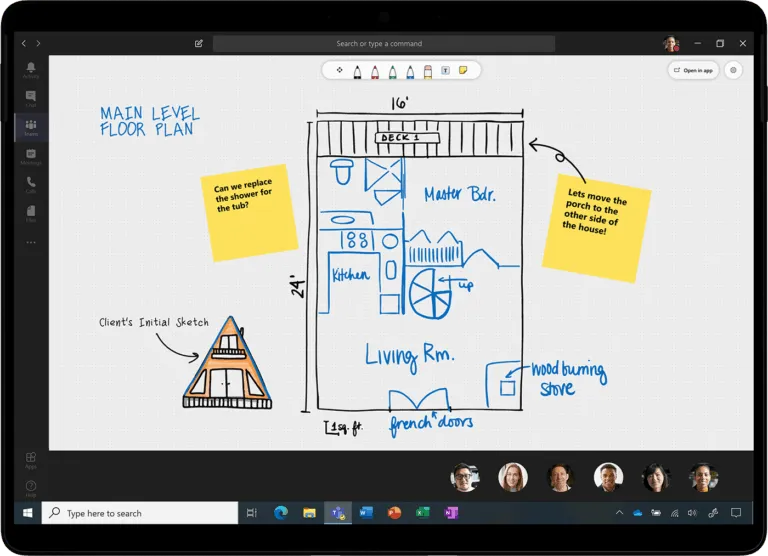
Streamline your work and save time
Tasks app
The Tasks app in Teams, which is rolling out this month, provides a new unified view of tasks from Microsoft To Do, Planner, and Outlook. Smart lists like “Assigned to Me” bring tasks together in different shared subscriptions, whether you’re on a desktop, internet, or mobile. Add tasks as a tab in a channel and experience the familiar Planner tab experience with the new list view.
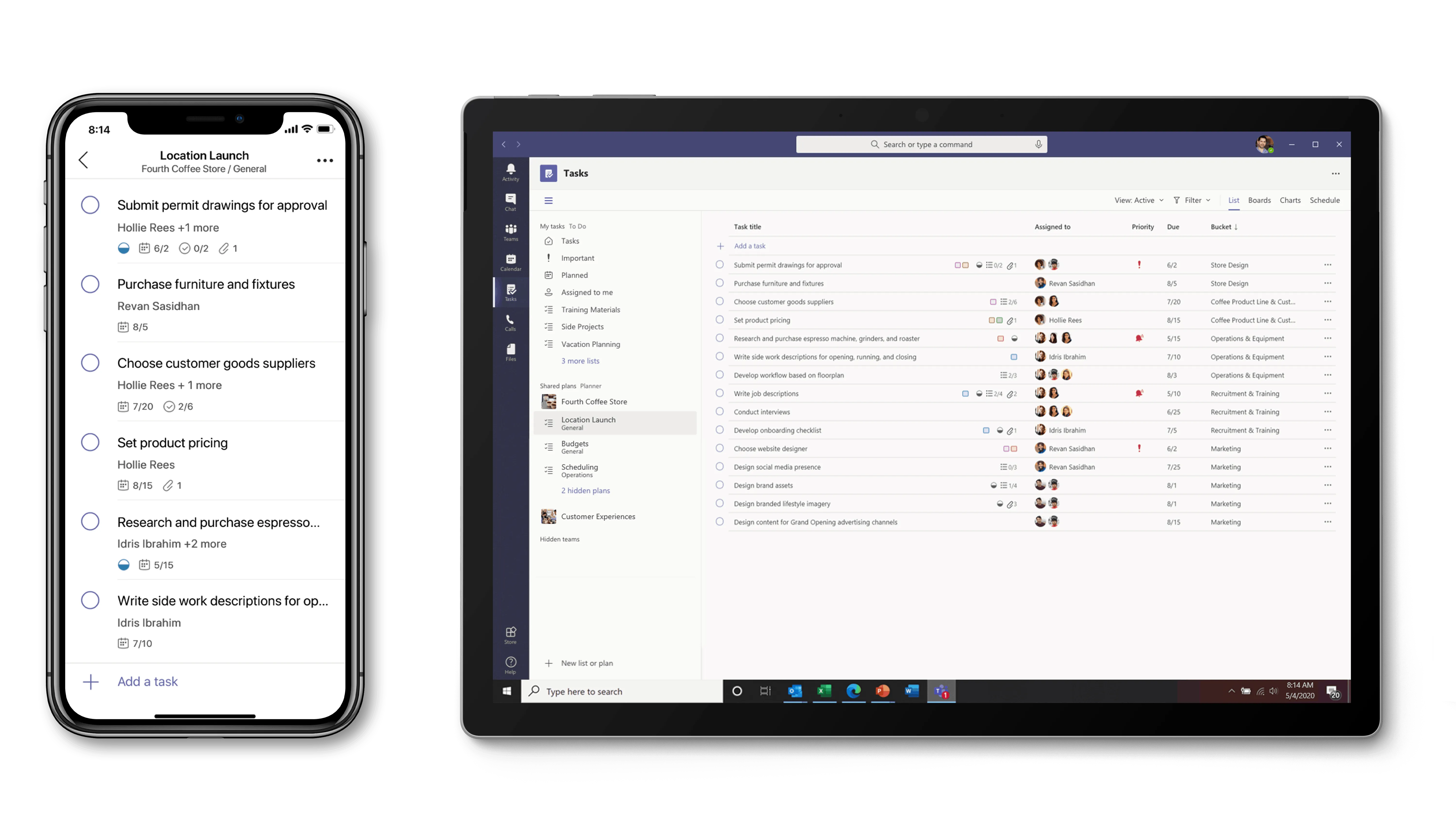
Suggested answers
Transfer your message with just one tap! Suggested responses in Teams chat use supportive AI to create short answers based on the context of the previous post. So the next time someone asks you, ‘Do you have time to meet today?’ you can reply “I’m sure!” without even pulling your keyboard up. This feature will be rolled out this month.

Cortana in Teams
Coming soon to the Teams mobile app, Cortana uses AI and the Microsoft Graph to provide voice support in Teams. To stay in touch with your team, even when you’re full, you can ask Cortana to call, join a meeting, send instant messages, share files, and more. These voice support experiences come with enterprise-grade Cortana services that meet Microsoft 365 privacy, security, and compliance obligations. Cortana will be available in the Teams mobile app on iOS and Android for Microsoft 365 Enterprise users in the United States in English in the coming weeks.
Microsoft Teams screens
Organizations need to enable their employees to set up more effective home office spaces, while also preparing some to return to the office. To help you, we’re introducing a new Microsoft Teams screen, a new category of all-in-one dedicated Teams devices with a touch screen and a hands-free experience made possible by Cortana. Natural language allows users to ask Cortana to participate in and present in meetings, dictate answers to a Teams chat, and more. These devices integrate seamlessly with your PC and provide easy access to Teams chat, meetings, calls, calendar, and files. And with a camera shutter and microphone-mute switch, your conversations stay private. The Lenovo ThinkSmart View will be the first Microsoft Teams display on the market and Yealink will also provide one of the first devices in this category. Microsoft Teams screens with Cortana will be available in the United States from later this year.
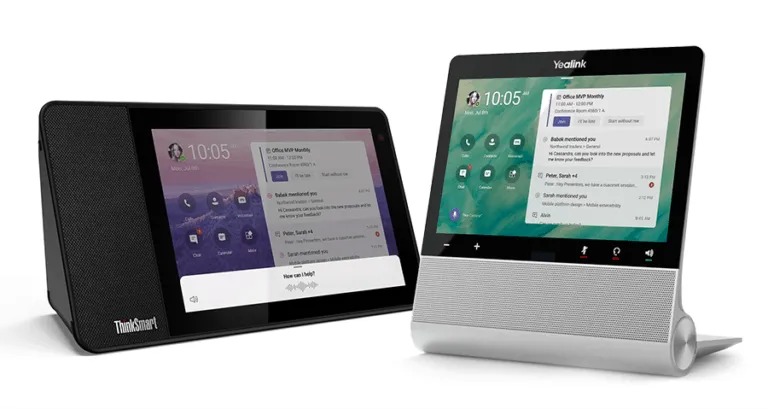
Contactless encounter experiences
As some people return to their workplaces, contactless meeting experiences in shared spaces are more relevant than ever. Today, Teams allows people to participate in meetings and share content with meeting room devices from their own mobile device or PC. Later this year, we’ll also be enabling these capabilities on Surface Hub. We’re building on these capabilities with a new room remote in the Teams mobile app, which offers additional meeting options, such as the ability to leave the meeting, mute the room, lift the mute, adjust the audio volume, and turn cameras on and off. Later this year, voice support will be enabled for Microsoft Teams Room devices, so that participants in the space can ask Cortana to join and leave a meeting, add an address book attendee to a meeting with their name or phone number, and more. We’re also introducing the ability to cast wirelessly to a Teams Room, collaboration bar, or Surface Hub device, enabling seamless ad-hoc personal collaboration for people in a shared space.
Note: Voice commands are first launched in English for Microsoft 365 Enterprise users in the United States. Not all Teams Room audio devices support Cortana voice support.
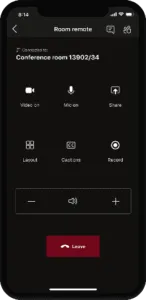
While the above capabilities are designed for work and school, we strive to make Teams the platform for work, life and learning. To that end, we’ve also recently introduced new features in Teams that let you stay connected and organized with family and friends. Read more about these features here, now available in mobile preview.
Unless otherwise stated, all of these features will be rolled out later this year.
And they all reflect our vision for the future of work: where everyone can contribute and do their best; where they can move smoothly between experiences, apps, and devices; where AI provides a helping hand to streamline tasks, provide shortcuts, and save time; and where technology contributes to and does not detract from well-being.
From kick-off to the launch of the project – and all the intermediate points – Teams is the place where people come together to get their work done. We work with our customers and continue to rediscover the future of work and deliver technologies that put people at the heart of every experience.
Source: Microsoft.com
Want to know more?

Related
blogs
Tech Updates: Microsoft 365, Azure, Cybersecurity & AI – Weekly in Your Mailbox.


